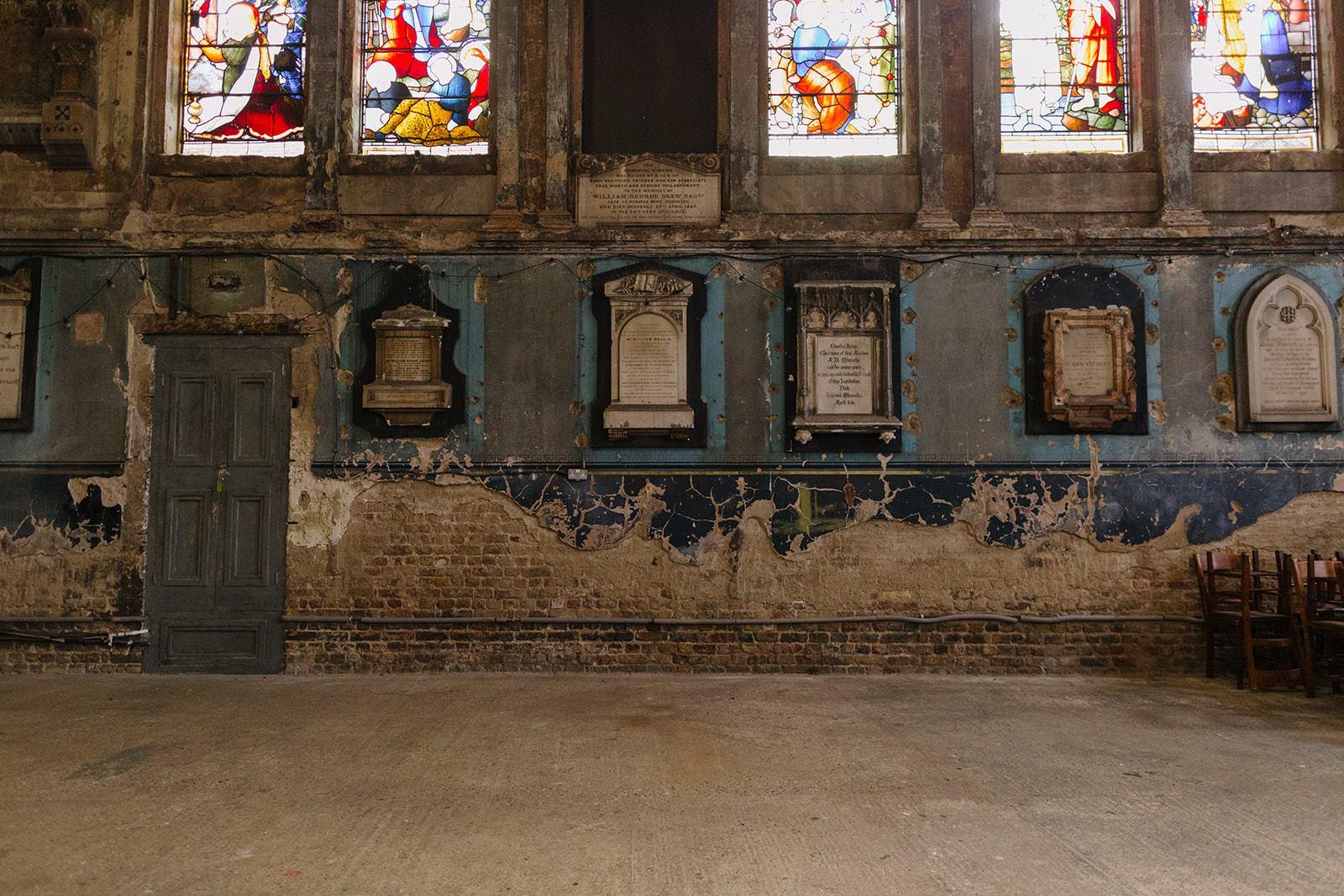For the new Pyne & Smith line we were lucky enough to have some of our Pyne & Smith team already residing in the UK, including yours truly and our incredible photographer @ethiclee, meaning we were able to pick a unique location to do one of this season’s lifestyle shoot. Joanna decided on this beautiful building called the Asylum Chapel, located in Peckham, South London.
The appearance of the chapel itself looks desolate, with cracks and exposed layers of paint, plaster and brick on the walls that give it a hauntingly industrial feel. The walls are stained with remnants of fading colourful paint, lined with beautiful stain glass windows sitting above a row of stone memorial plaques, but the floors are clear of dust and fallen brick. In fact, the chapel itself is purposely kept in the pristine condition of desolation and is still used as a place of ceremonial and artistic gathering.
The Asylum Chapel has an unexpected history. Despite what its name suggests, it was not actually a mental health institution, but instead an asylum in the older sense as a place of sanctuary, or more specifically an alms house. Prior to the existence of welfare, alms houses were retirement homes for impoverished elderly people who were faced with the formidable prospects of either workhouses or destitution. Here they would receive a weekly payment, coal and medical care. The asylum chapel was the centre of London’s largest complex of alms houses for retired pub landlords [insert joke about pub-loving Brits here].
The chapel dates between 1827-1835, at which point, Peckham would have been unrecognizable. Instead of an urban London suburb, it was a rural market town surrounded by fields and the chapel was at its centre as it held beautiful congregations and was seen as a place of power. The row of stone memorials on the walls were costly and a wing was added for Prince Albert and opened by the Prince himself. The chapel was the grand heart of North Peckham. Sadly, during World War II, the chapel’s residents were evacuated, the chapel itself was bombed leaving, surprisingly, only the stained glass windows and stone memorials intact.
In 1960 the asylum was bought and its cottages used as social housing; in fact, the cottages surrounding the chapel are still in use as social housing. The chapel itself was never really used again and was left in its deserted state until 2010 when it was bought by two artists Jo Dennis and Dido Hallett. It is now used as a space for art projects, wedding ceremonies, exhibitions, theatre and shoots.
The Asylum chapel has an intriguing past that is reflected in its appearance. A place comprised of charity, community, art, devastating history and touches of grandeur. All of this resonated with us at Pyne & Smith, particularly, this season, as a place of sanctuary; still standing, still purposeful despite adversity, hardship and time.
If you’d like to see more of the chapel check out Maverick Projects.
